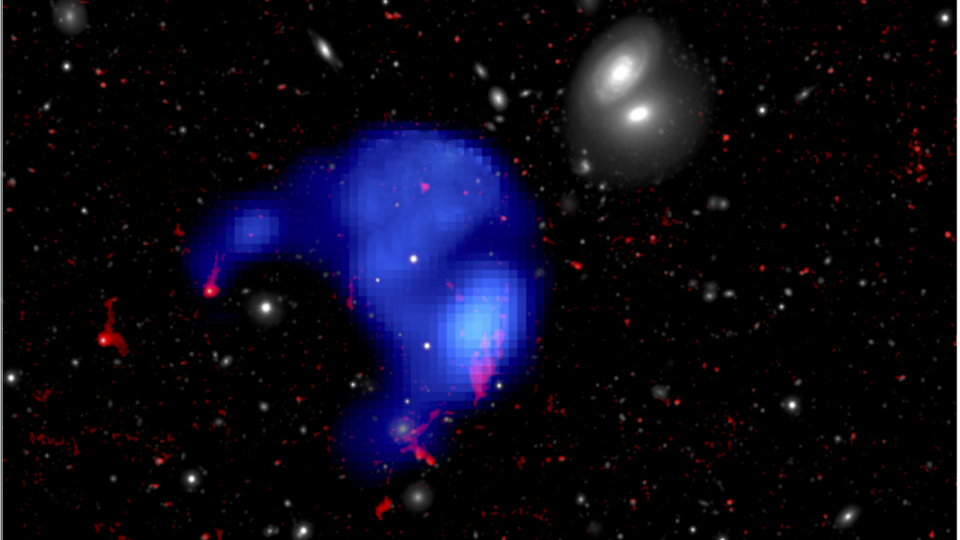
Space: an orphan cloud first observed
it’s new. For the first time in world scientific history, researchers recently noticed an “orphan cloud”.
This telescope was spotted in a completely unexpected way by the European Space Agency (ESA’s) XMM-Newton Telescope, which welcomed the discovery on Twitter.
New notes with Tweet embed An ‘orphan cloud’ – an isolated cloud within a group of galaxies – has been revealed for the first time ever https://t.co/xilxEuRcLo pic.twitter.com/CuJS0rm5ow
– ESA France (@ESA_fr) June 29, 2021
The image has been color coded by the European Space Agency (ESA) for ease of understanding. The blue part corresponds to the “orphan cloud”. If it seems very small, keep in mind that this cloud is in fact larger than the Milky Way, according to researchers at the University of Alabama / Huntsville (USA) who discovered it. Red indicates hot gases and white indicates galaxies.
All alone in the middle of galaxies
To understand the meaning of “orphan cloud”, you have to pay attention to galaxies. Galaxies are completely chaotic assemblies of stars, gas, dust, and matter called an “interstellar medium” that fill the space between stars. There are billions of galaxies in the universe and they cluster quite often. Then they form “clusters of galaxies” that are held together by gravity.
But sometimes, even within these clusters, a piece of the interstellar medium is cut from their galaxy and ends up alone in the cluster. This is called the “orphan cloud”. In other words: what we see in the ESA image is actually an isolated piece of galaxy among dozens of others.
If scientists knew they existed, they wouldn’t be able to notice them even today. The “orphan cloud” discovered by the European Space Agency is found in the Abell 1367 cluster, also called the Leo cluster, which is located 300 million light-years from Earth and contains about 70 galaxies. The cloud was first observed in 2017 by Japan’s Subaru Telescope.
Professor Zhong Ge and colleagues at the University of Alabama published a study on it in Monthly notifications of the Royal Astronomical Society. In it, they explained that the cloud “may have been floating between galaxies for a long time.” It would have survived the differences in speed and density within the cluster thanks to its magnetic field, which allows it to neutralize these instabilities.
But there are still many unknowns. For example, researchers do not know who the cloud’s “mother galaxy” is. Either the reasons for the separation of the cloud from its galaxy, which is also still in the theoretical stage.

“Organizer. Social media geek. General communicator. Bacon scholar. Proud pop culture trailblazer.”

![La région «Cthulhu» est bien visible, à l'ouest du «cœur glacé» de Pluton.[NASA / AFP]](http://theinformant.co.nz/wp-content/uploads/2021/06/Space-an-orphan-cloud-first-observed.jpg)